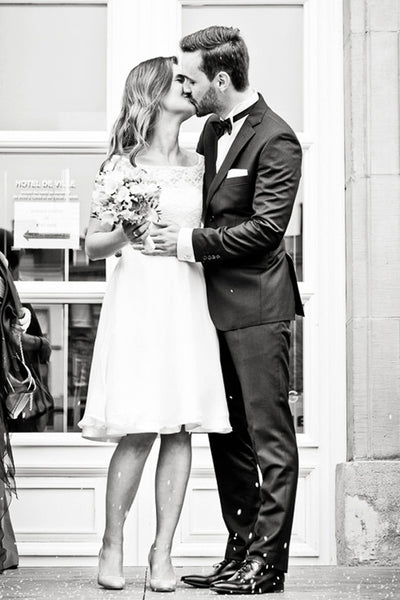
Short Wedding Dress By AlesandraParis
Wine Guide for the Bride & Groom: This is Your Ultimate Bride & Groom Wine Guide with Bonus Tips on Serving & Saving at Your Reception...
Let's get to some Bride & Groom Wine Guide 101 Basics.
We'll cover:
-vineyards and regions
-exploring local wineries
-trying new wines together
-finding wines in your budget
-judging a wine store
-shopping online
-and even boxed wines
We'll also cover tips on serving drinks and food at your reception to save money.
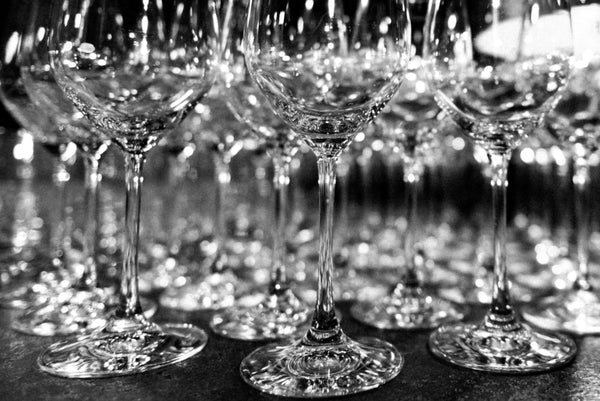
Bookmark this Resource, and Get Ready for Your Bride & Groom Ultimate Wine Guide...
To Start as Bride & Groom, You Need to Know How A Vineyard's Region Affects A Wine:
Great wines start with great grapes from great places. With substandard raw ingredients, there is no way to produce anything other than a substandard wine. This being the case, there are a few specific conditions, which make grape growing impeccable. Let's take a look at these conditions, and what other influences different regions have on their wines.
Conditions for Impeccable Grape Growing
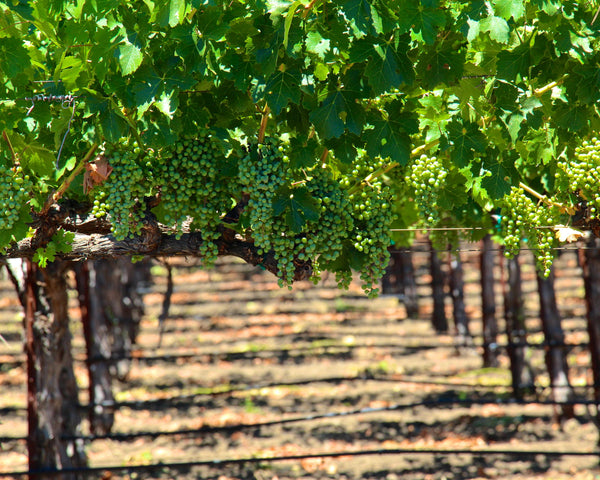
Vineyards, more importantly the grapes in those vineyards, need a certain set of conditions to grow optimally. These conditions include a cool breeze off the ocean, infrequent rainfall, rocky soil for good draining, and plenty of sunshine. Ultimately, the body and taste of the wines are based on the conditions the grapes are grown in.
Bride & Groom Wine Guide Through Terrain
The combination of land, seasonal weather and soil used to produce wines, even has a French designation called, "terroir". Pronounced [tear-wah], this term is the origin of the word terrain. While you can have the same type of wine, Pinot Noir for example, from three different regions like New Zealand, Burgundy, and California, you can expect to have three different tastes due to the terrain in which the grapes grow.
Bride & Groom Wine Guide-The Regional Differences...Grapes Are Like People
Your appearance, accent, and palate were formed by your exposure to your community or region. The same is true for grapes and wine. Each region has people with different techniques for growing grapes and producing wine, usually passed down from generation to generation.
Champagne Example
Take for instance, Champagne. This sparkling beverage was originally produced in Champagne, France with special grapes and innovative techniques. The only true "Champagne" is from this region in France. Any other bubbly wine is actually Sparkling Wine and must be labeled so. This is a case where a community took such pride in protecting the land, and developing the traditions used in their specific form of wine making, that no other sparkling wine may be labeled Champagne.
Proud Regions of Grapes
Since each region has climate differences and commitments to tradition, it's easy to study the grapes and growing conditions for each region to make categorizations about exactly what regions can produce certain types of wine.
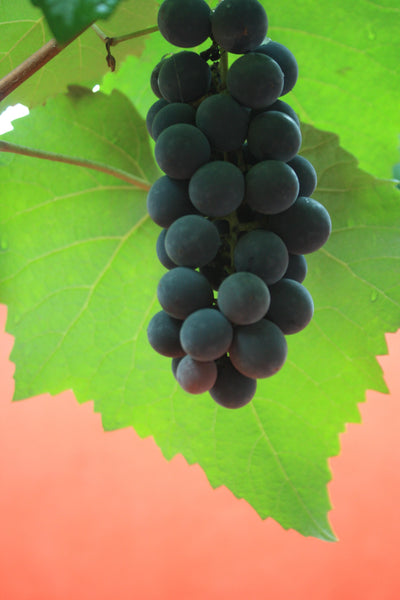
A Grape Which People Must Stomp
An example is Port from Portugal, where the growers have been producing fortified vineyards for centuries. The region Port comes from, in Douro, has extremely rocky soil with desert like conditions. Port is only made by humans stomping the grapes, which adds to the uniqueness and allows only wine from that region to be called Port.
The regional impact on wines makes a big difference in how a wine tastes and feels. Knowing the conditions the grapes were grown in, how they were processed, and the time-honored traditions of the vintners, allow the Bride and Groom to know exactly what to expect with each type of wine.
Bride & Groom Wine Guide...Know the Region, Know the Wine!
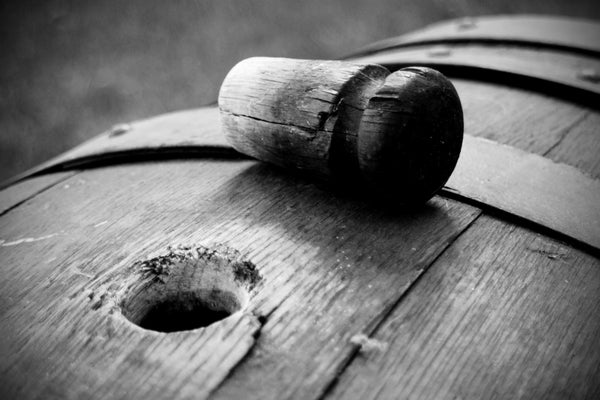
Going Green as Bride & Groom Means "Drink Local"...
The current wave of excitement in the "Go Green" movement is to "eat local." This movement advocates eating food grown locally to help support farmers in a "farm-to-table" cuisine.
This movement sometimes fails to recognize the "drink local" portion of the equation. However, for a Bride and Groom who like to have a great glass of wine with a meal, drinking wines from local vineyards and wineries is a worthy cause, as well.
A Bride and Groom can also apply this to their reception celebration.
*Bride & Groom Wine Guide Bonus--Saving Money at Your Reception Tips

Saving Money on Drinks
Serving drinks at the reception can be expensive. Of course, it doesn’t have to be.
Here are some great tips on serving drinks at your reception that will satisfy everyone; particularly the ones paying.
-
Serve your beer and punch for free, and get all to pay a minimal amount like a dollar per mixed drink etc.
-
Offer an open bar for a small amount of money per guest such as 2 or 3 dollars to help you recover some of your money.
-
Request the champagne toast is free and everyone bring their own drinks to the outdoor reception. For this option let everyone not be obligated to give a gift.
-
Look to get your spirits in bulk from a wholesaler.
-
Begin to prepare for your reception months ahead of time so that you may purchase all drinks over a time period rather than all at once.
-
Do not forget to include special punches or sodas for non-alcoholic beverages.
-
Bride & Groom Wine Guide...Explore Your Local Wineries
A change in attitude to incorporate local wineries into your search for great wines makes sense, both economically and environmentally. Let's take a look at why choosing wine from a local winery is a good idea as Bride and Groom.
Terroir & Celebrating Uniqueness
Exploring local vineyards and wineries allows you to know exactly what type of climate the grapes were grown in, which gives you a great understanding of what to expect when it comes to flavor.
As you learned above, the climate and area in which the grapes were grown create the unique flavor of the wine. By enjoying a local wine with local food at your reception, you get the full experience of really living in your area. Many smaller wineries are trying to preserve a sense of unity and territory, along with the farmers. When you purchase a local wine, and eat locally grown food, you are helping to sustain your region's way of life.
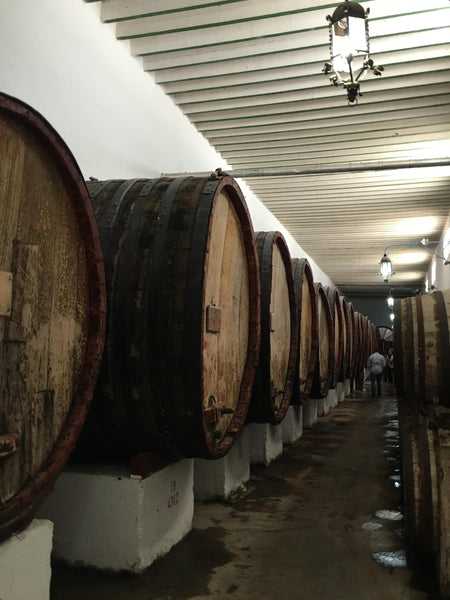
Think About Travel Weary Wine
A bottle of wine from across the country or world may have traveled thousands of miles to get to your door. During this travel, your bottle of wine had to withstand difficult elements. However, a bottle of wine you just uncorked from a local winery has fewer miles to travel, perhaps even just across the vineyard. Chances of deterioration from the long travels and uneven conditions increases the further away you go for your wine. Proper storage is less of an issue when the wine is delivered to your table from across the street instead of from across the globe.
Bride & Groom Wine Guide--Your Price, Your Community, and Your Planet
Ordering from local wineries can also stretch your dollar. Generally speaking, local wineries are not rated by top critics, so they go largely unnoticed. In order to compete with the larger names in the industry, these smaller vintners keep their prices down to get noticed. Also, since there is not a large shipping cost involved, the Bride and Groom don't get the additional charge added into the price of the bottle of wine.
Bride & Groom Community
Don't forget the number of jobs the local vineyards create within your community. Don't you feel better knowing you are supporting your neighbor while you enjoy sipping your favorite local wine? Also, consider the waste of precious fuel resources shipping a bottle of wine around the world, when a perfectly lovely bottle of wine may be waiting for you right around the corner.
Giving more of your Bride and Groom wine dollars to local vineyards and wineries just feels good. This will keep your money in the local community, help to provide needed jobs, and help you stay within your budget. Everybody wins!
Bride & Groom Wine Guide: Time To Try A New Wine!

When we fall in love with a particular wine, we often are hesitant to try anything else. This is a pity, as this attitude closes the door to all sorts of new tastes and experiences. If you're buying the same bottle of wine every time you shop, stop - look around - and consider trying something new and exciting.
Start by shopping lesser known regions. Many wine regions are becoming better known and have very nice wines at reasonable prices. Spain, Australia, Argentina and Chile are just a few that come to mind. If you always buy Italian or French, take a stroll over to these other regions and indulge in what could be a very pleasant surprise. Don't forget the lesser known American wine regions, as well. Many fine wines are being produced outside of California
Bride & Groom: Go Outside a Region & Spend Less
Expand your horizon by trying wine from areas just beyond a well known wine growing region. Look for the "second labels" of more established wineries. These are quality wines sold under a different label at a lower price, a practice quite common in Bordeaux, and gaining popularity in California.
Sometimes palates change, and can do so quite dramatically. A person who normally loves the burly red wines, may start enjoying the lighter, crisper white wines. This would be a good time to reassess your tastes, and try totally new wines of all varieties.
Now that you are venturing together into new wines, you may as well add some cheese. Here is Nigella Lawson to help you with that...
Bride & Groom Wine Guide 101: How To Find Wonderful Wines Priced Within Your Budget
Unless you are a wine connoisseur with unlimited funds, high priced wines are typically not considered when most people are shopping for wine.
Many people have the notion that the higher the price, the better the wine. This is simply not the case. Prices may be higher for certain wines simply because of a history of success. For instance, a certain wine may have had an exceedingly good year or two, which makes that vintage very high priced, especially if the vineyard has suffered since with a bad growing season. Scarcity may force the price way up.That doesn't mean that there are not any good deals on perfectly fine wine.
Here are some easy Bride & Groom wine guide tips to find good wine for less money.
Critics Scores
Many wine critics rate wine before it is bottled. While these score ratings are not the be-all and end-all of wine tasting, they do give a pretty good depiction of how the wine tastes. If you compare more expensive wines with the less expensive bottles, you may find some that are scored around an 88 or 89, a very good wine, while a lower priced wine may actually receive a score in the 92 to 93 range, which is an outstanding wine. So it seems one can't really judge a wine by its price.
Do Your Bride & Groom Wine Research
While the scores are merely a suggestion from a wine critic, it always helps to do your research before you go to the wine store. What kind of wine are you looking for? Is it a Merlot, a Pinot Grigio, or perhaps a Riesling? Learn the regions in which the grapes were grown. What kind of climate did the region have each year? Temperature and humidity have a great effect on the quality of wine from year to year.
Once you have a general idea what type of wine you wish to buy, the scores in that category would be another tool in your research. Now, we just mentioned that scores are only suggestions, but why not try some of the higher scores in the lower price range instead of blindly tasting wine by price alone?
There are numerous websites that list the scores for wines, along with their average price. Pick out a few on the list, and write the names of the wines down to take along with you to your local wine shop.
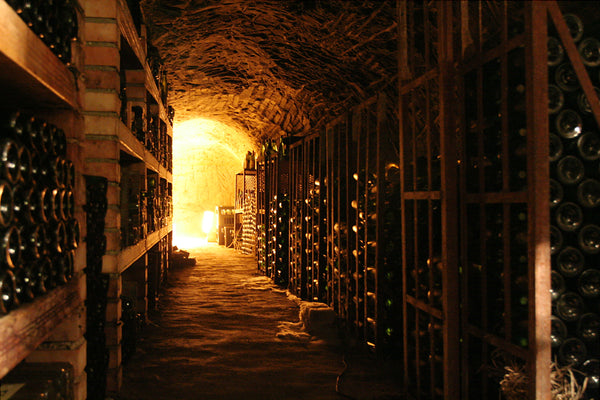
Bride & Groom; Give Different Vintners a Try
You may have a favorite label, one you turn to time after time, but as mentioned above, until you step out of your comfort zone and try other vintners, you will never know if your current favorite is truly the one you enjoy most. More often than not, the less known wine makers, which may be the up and coming stars in the industry, start off with low prices and work their way up each year. Trying smaller vineyards is a great way to save money while picking up the best wines before they become superstars.
Bride & Groom Open Minds
Keeping an open mind is a great way to experience new, fantastic wines while keeping the budget intact. Pay attention to critics scores, but only as a suggestion based on someone's critique, perhaps one you won't agree with. Do your research, and delve into the growing conditions of a particular vintage. Try new vintners as well as different locations and years of the same wine.
Always ask your wine shop agent to suggest something new within your price range. Normally, your local wine shop will have knowledgeable people trained to help you make a decision about your wine selection, and will point you in the direction of exciting new wines to explore.
Start at the bottom shelves at your wine shop, and work your way up. You'll never know what treasures you'll uncover until you start digging! Here's a great idea to do together as Bride & Groom...
Find Your Bride & Groom Favorite Wine & Custom Label It!...

By nancynikkodesign
Bride & Groom Wine Guide 101: Red or White
Red Wine
This is the basic decision that most people make. Choosing red or white wine is pretty much the starting point when looking for new wines for your particular taste. While both wines can offer a "full bodied" taste, it is important to understand the basic differences between red and white wines. Red wines usually have more of a dark fruit taste. These are fruits such as strawberries, cherries, blueberries and even a cranberry flavor component.
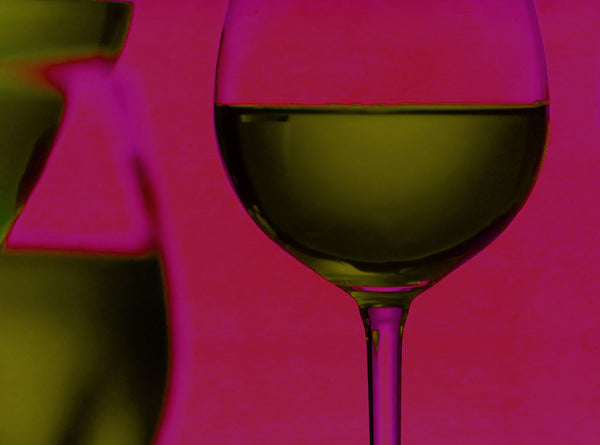
White Wine
White wines have a higher acidity level, rightly so as they usually embody the citrus flavors of lemon, lime and grapefruit. These wines are usually more tropical in their bouquet and have a much lighter persona to them. The white wines also come with a little more "oak" flavor, as they tend to pick up the flavor of the barrel they were aged in.
Bride and Groom Wine Guide 101: Dry or Sweet
Dry Wine
Dry and sweet are two categories of "mouth feel." The drier the wine, the more tannin it has in it, usually. These tannic blends are usually a bit bitter at first, but are cut by the acidity of the wine, or are mellowed by the alcohol. Wines with a higher tannin content are better when left to sit and age, as the tannins will begin to fade after a while, becoming incorporated into the wine.
Sweet Wine
Sweet wines, on the other hand, can have a bit more sugar aspect to them. These wines leave the palate wet and usually ready for food. Higher sugar content will give the "nose" of the wine a bit more of a bite, but typically balances out with the flavor of the fruits.
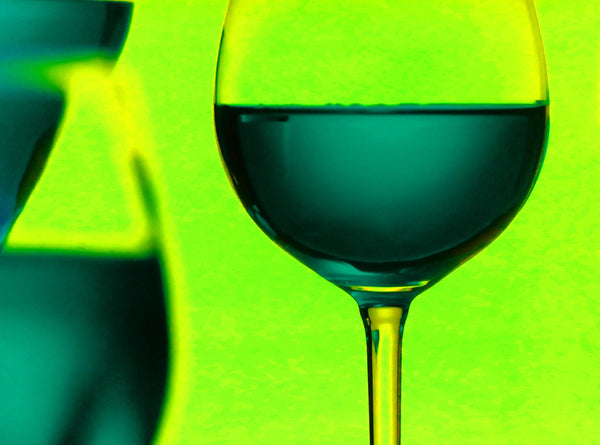
Bride and Groom Wine Guide 101: Hot or Cold Alcohol Content
While it would seem these two designations are based on the temperature the wine is served, this is not the case for this discussion. Hot and cold wines refer to the alcohol content in the wine. Typically done by volumetric ratios, hot wines will have alcohol content above the 12.5% level. The cooler wines will be below this, even down into the 9% range.
If you are struggling trying to choose a new wine, start by making the basic decisions first about whether you want red or white, dry or sweet, and then hot or cold. Once you have those factors in mind, ask your local wine shop expert for suggestions. Take a chance on an unfamiliar wine and surprise your palate!
When Needing Wine Shop Expert Suggestions as Bride & Groom, You Need to Know a Good Wine Store...
Bride & Groom Wine Guide 101...Judging A Wine Store
Wine stores can be extremely daunting places for those who are not trained in the art of choosing wine. Here are some tips and tricks of what to look for in a wine store, as well as how to leverage your wine shop so you get the most out of every shopping trip.
Check Easy to Read Signs
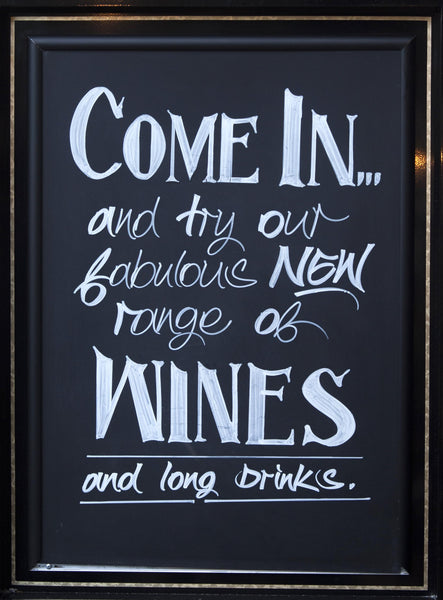
These signs will notify you about what types of wines are located within the general vicinity, and also if there are any sales going on. These signs should be clearly noticeable from the front door, so you know exactly which direction you need to head. This will help you keep from getting overwhelmed in those first few minutes you walk in the door.
Look for a Helpful Staff
A good wine store will have a helpful and caring staff of people who are knowledgeable about the products they sell. It is also extremely important to get to know the staff at a wine store as they are generally the ones with the insider knowledge about new wines hitting the market, as well as the deals going on in the store. The staff should be able to translate what you're saying into the wine you are seeking, and then point you in the direction you need to go and step in to offer more help when needed.
Check Selection
Having a large number of bottles on the floor doesn't always equate to a good selection. Some wine distributors focus on the labels, which move the biggest volume, or are sold to them at the lowest price. These wine stores are focused more on their bottom line than on the overall happiness of their customers. Do your research before you walk into a wine store, and print out a list of wines you would like to look for. Take this list with you and see how many of them are stocked at the store.
The store should give you a sense of comfort with a wide variety of styles and prices. A good wine store should have a well-balanced mix of price ranges for their wines.
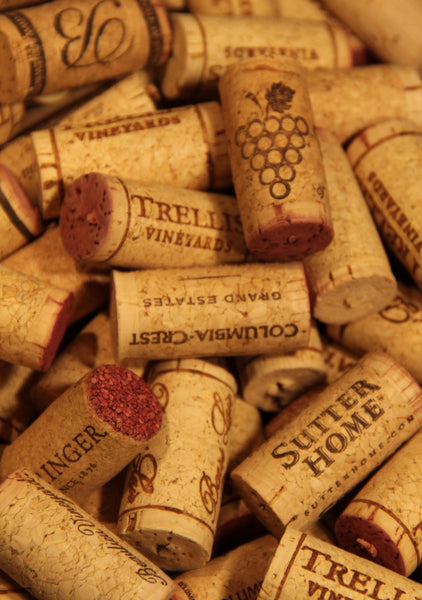
Check the Storage
Wine should always be kept below 75 degrees Fahrenheit. Wines stored above this temperature begin to age quickly and can oxidize, turning them into undrinkable bottles. Are you a bit chilly inside the store? That's good. That means the the wine is most likely stored properly.
Bride & Groom Events
One of the more fun aspects of finding a decent wine store is to look for a place that schedules events, such as tasting and seminars. These are meant to educate the customers, and are generally a lot of fun to attend. You will find out more about wines at these events than you will ever learn from other research.
An email list is another way to figure out if a wine store is a good bet. Stores with email lists keep up with their customers, which also keeps them in tune with their stock as they're emailing you on a regular basis about new product and specials.
Bride & Groom Wine Guide 101: Purchasing Wine Online
Sometimes you find yourself surfing the Internet for your wine. The Internet can be a great way to purchase wine. But before you click "buy", there are some simple tips to making your online wine purchase more enjoyable.
Know Your Source
A large number of wine experts, certified organizations and critics are beginning to rate wine websites. Many wineries are also jumping on the bandwagon. These ratings help buyers feel comfortable with their purchasing decision online. These reviews are being prominently displayed on websites, and can also be accessed by visiting the website of the critic or vineyard, which also list reputable online distributors.
Bride & Groom Should Ask Questions
If you are unsure about a certain website, ask the questions you need in order to feel comfortable. Asking questions up front lets you know two things; 1) there is someone on the other side of the computer screen who cares about you and your decisions, and, 2) there are precautions in place to make sure you get exactly what you ordered.

Utilize Information
Today's online marketers do much more than sell wine. More often than not, the store has a blog, or at least some place to get more information. Here you can expect to find articles on selecting different types of wines for various occasions, and even some sponsors by wine enthusiasts with their top picks. All of this information is there to utilize, and help you make the perfect selection for you needs.
Take Advantage of Convenience
There are benefits to ordering online such as the ability to shop at a plethora of stores within minutes. You also can shop an unlimited stock of items, and do not have to worry about a limited selection in your local wine shop.
The wine is delivered directly to your doorstep or reception, usually packaged in some type of cooling container. This makes sure the wine stays at a proper temperature when shipped.
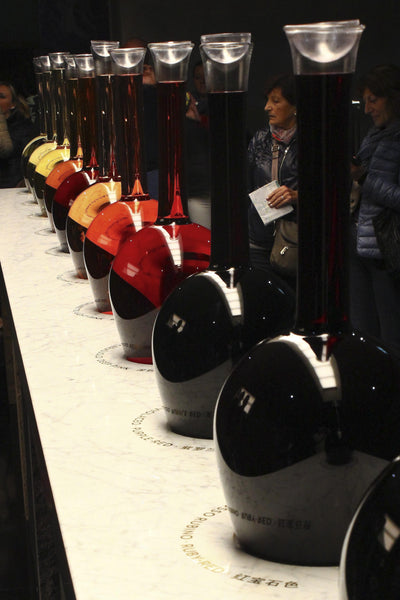
Bride & Groom Wine Guide: Are Boxed Wines Worth Trying at Your Reception?
Boxed wines and Tetra packs are becoming more and more popular. A few years ago, when these packaging techniques first hit the market, the wines contained inside were generally not very good. With few exceptions, these wines were extremely on the tannic side or contained copious amounts of alcohol, which only served to dilute the flavor of the packaging that inevitably came through.
There are a large number of points to consider when talking about boxed wines, or in more general terms, alternatively packaged wines. We will go through some of the pros and cons, and try to decide whether boxed wines are the wave of the future.
Pros:
Take a look at any box of wine you find in a store, and one of the first things you will notice is the larger fluid volume in the container. While most wine bottle are 750 ml, a box of wine can hold the equivalent of four bottles of wine. This packaging typically forces down the price due to manufacturing cost savings.
The boxes, or rather the sealed bag within the box, help the wine retain its fresh taste for longer. The airtight bag within the box is never opened to air, and only deflates as the wine is poured. This method maintains the freshness of the wine up to four weeks as opposed to four days in an open bottle. By keeping the air out of the wine, the oxidation process is avoided and the wine maintains its delicate flavors.
Not having a cork in the wine is also a big selling point when it comes to freshness. No cork means no chance of letting in mold and musty tastes.
The big advantage of boxed wine is that the design of the packaging allows the wine to ship more efficiently and safely from anywhere in the world. Because the storage container is not glass, there is no breakage. Because more wine makes it safely from freight to table unbroken, there is less profit lost in damaged shipments, passing that savings on to the Bride and Groom.
Cons:
Of course, with any deviation from the norm, there are stigmas. Change usually is met with some hesitation. That doesn't mean that there isn't some truth to those original feelings about boxed wines. Five years ago, boxed wines were usually substandard and so the stigma was justified. Boxed wines were considered cheap, undrinkable wine and typically received a turned up nose from guests. Today's boxed wines are much more palatable and can often stand toe-to-toe with a bottled counterpart.
Another detractor from boxed wines seems to be the lack of varieties. Since boxed wines are not fermented the same way as bottled wines, in oak barrels, very few wineries are set up to ferment the wine, thus cutting down on the available options for boxed wine.
Wine manufacturers are coming up with new ways to store and ship wine every year. While boxed wines take some getting used to, these alternative packaging methods are improving, often resulting in a good quality wine at a very reasonable price.
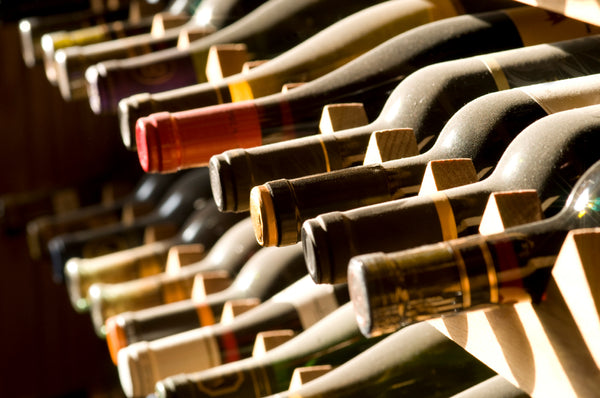
Now, you as Bride & Groom should have a good handle on planning your wine drinking at your reception, so we'll finish with some quick menu planning to help your budget as well...
Planning the Menu
When you are planning a budgeted menu, you must first know your exact budget for food and drink specifically. Some people keep the food and drinks separate, but on average, the food and drink are part of the same bill.
If you are hosting an indoor reception in a hall, and plan to have a dinner option, you have to accommodate the needs of all of guests which include vegetarians. Request that the guests RSVP beforehand, so you can get the right amount of vegetarian plates.
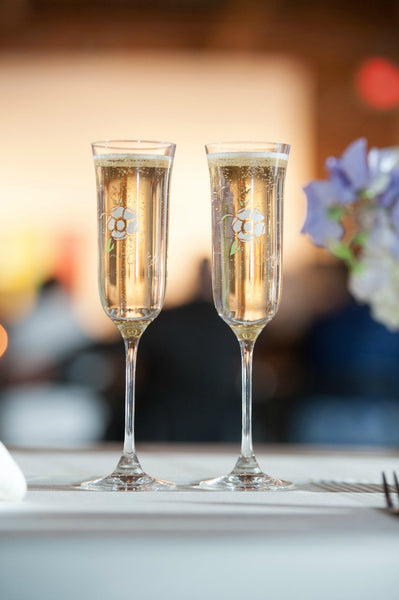
The way you choose to serve dinners can vary. Here are some tips on how you can choose to serve the guests, to make it a bit cheaper…
-
Serve the meals buffet style, with this option you have people forego wedding gifts in favor of bringing a dish.
-
Offer vegetable, fruit, meat platters with dips and crackers instead of foods.
-
Ask each guest to contribute a small amount of money to the reception, or to make donations toward the reception rather than buying a gift.
-
Offer a soup and salad menu rather than a full entrée.
-
Offer a limited bar which means that you offer an open bar only at certain times such as after dinner and during toasting, etc.
-
Offer around the world appetizers instead of a meal. This will give you the opportunity to offer fill-ups such as crab, shrimp, etc. as well as casual appetizers like cheese sticks, chicken wings, and mushroom caps, etc.
-
Request that each immediate family member create a dish instead of a present.
-
Do not pay for extras like servers, bartenders, etc. Ask a friend or family member to do it as a wedding gift.
Outdoor receptions give you much freedom when choosing your menu, because you can serve anything you want including barbecue, long group submarine sandwiches or pizza.
As long as you offer foods that will accommodate both carnivores and vegetarians, you will be fine. If your budget doesn’t fit, you may have to trim the invite list.
Finally, you the Bride & Groom are ready to plan, and ready to enjoy your future!
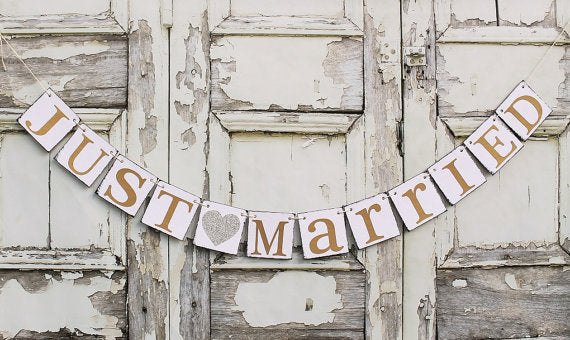
Sign By WineCountryBanners

